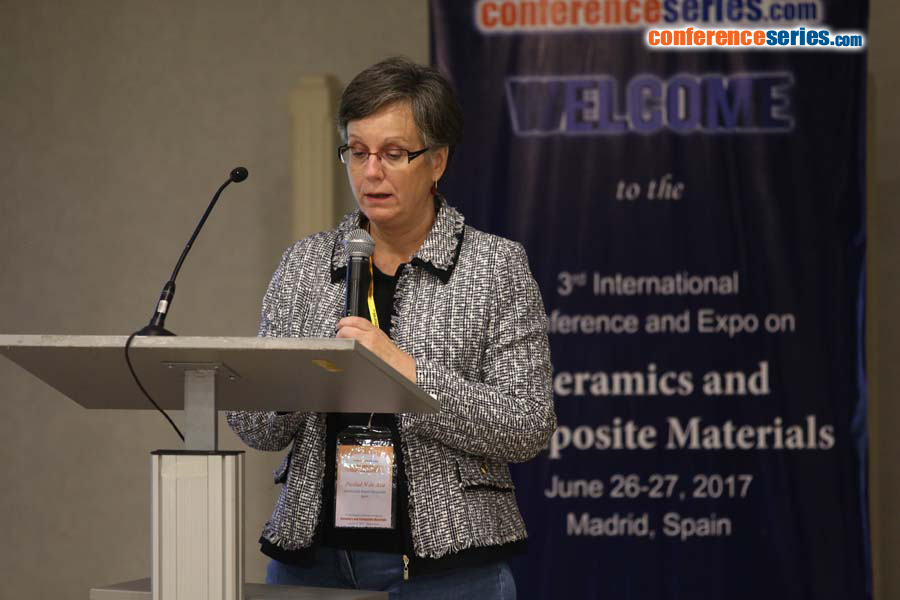
Piedad N de Aza
Universidad Miguel Hernández, Spain
Title: Biphasic Si-Ca-P ceramic for regenerative medicine: scaffold processing and biocompatibility
Biography
Biography: Piedad N de Aza
Abstract
The present study refers to the preparation and biocompatibility characterization of a biphasic Si-Ca-P scaffolds to be used as matrices for bone regeneration or as-specific release vehicles. Ceramics are widely used for bone tissue engineering purposes and in this study, a Si-Ca-P biphasic porous scaffold, with nominal composition 28.39 wt% 7CaOP2O52SiO2-71.61wt% 5CaOP2O5SiO2 was produced using the polymer replication method of homogeneous mixtures of fine synthetic 7CaOP2O52SiO and 5CaOP2O5SiO2 powders. Polyurethane sponges were used as templates and impregnated with ceramic slurry at different ratios, and sintered at 1450ºC during 2 hours with 5ºC/min as heating and cooling rates. The characteristics of the Si-Ca-P porous scaffolds and respective powder used as starting material were investigated by using SEM, particle size distribution, XRD and Hg porosimetry techniques. It was possible to produce highly porous biphasic Si-Ca-P scaffolds presenting micro and macropores and pore interconnectivity. In addition, bioactivity was evaluated by examining in vitro apatite formation in simulated body fluid (SBF) for several periods of time. The experimental results demonstrated that, during soaking in SBF the porous surface of the ceramic became coated by HA-like layer after 6 hours. Also, in vivo biocompatibility was tested by implantation in NZ rabbits´ tibia. All animals survived the 6 months study period without evidence of inflammation or infection at the implantation site and strong adhesion between bone and the scaffolds was observed. The first results of in vivo tests on NZ rabbits showed good biocompatibility and osteointegration of the porous scaffolds implants, with higher osteoconductive properties and earlier bioresorption

Figure 1: (A) SEM view of the biphasic Si-Ca-P scaffolds (B) scaffold after 5 days SBF soaking and (C) antero-posterior X-ray of the bone section contained the implant after 3 month implantation.
Recent Publications :
- Ros-Tarraga P, Mazón P, Meseguer-Olmo L, De Aza PN (2016) Revising the subsystem nurse’s A–phase-silicocarnotite within the system Ca3(PO4)2–Ca2SiO4. Materials 9 (5): 322.
- Ros-Tarraga P, Mazón P, Rodriguez MA, Meseguer-Olmo L, De Aza PN (2016) Novel resorbable and osteoconductive calcium silicophosphate scaffold induced bone formation. Materials 9 (9):785.
- Rabadan-Ros R, Velasquez P, Meseguer-Olmo L, De Aza PN (2016) Morphological and structural study of a novel porous nurse´s A ceramic with osteoconductive properties for tissue engineering.Materials 9 (6): 474.
- Maté-Sánchez de Val JE, Calvo-Guirado JL, Granero Marín JM, Gomez- Moreno G, Mazón P, De Aza PN (2016) Material characterization and in vivo behavior of dicalcium silicate cement modified with phosphorus. Ceram. Int. 42(1): 952-960.
- Lugo GJ, Mazón, P, De Aza PN (2016) Material processing of a new calcium silicophosphate ceramic. Ceram. Int. 42: 673-680.


